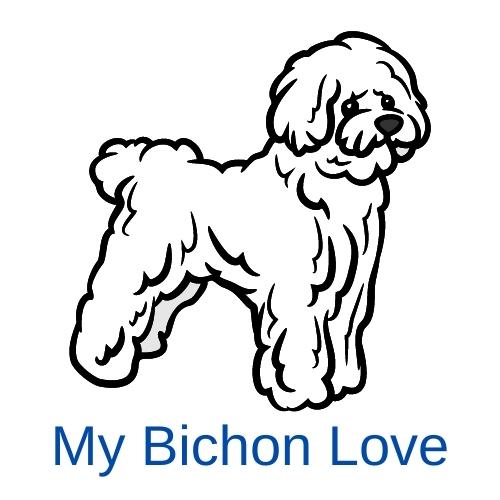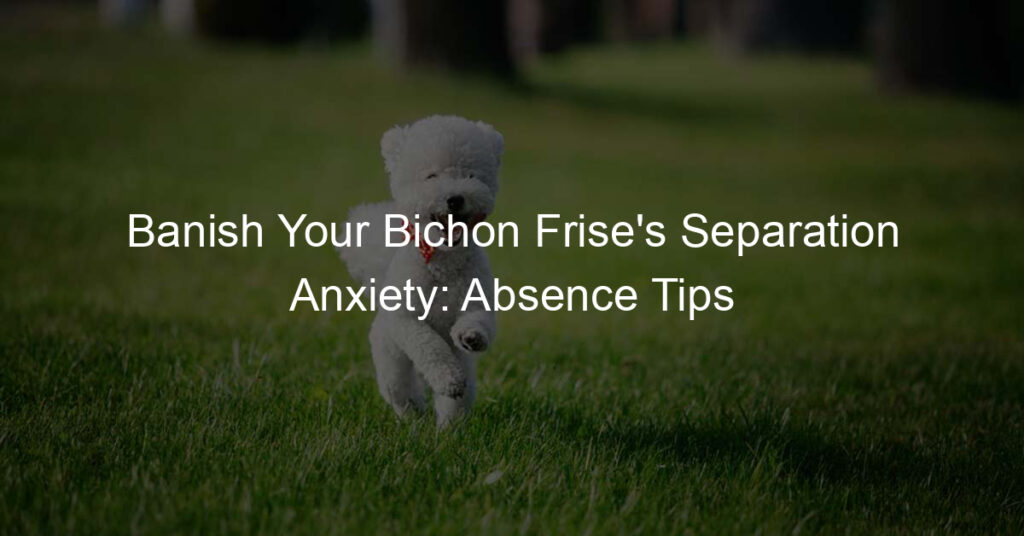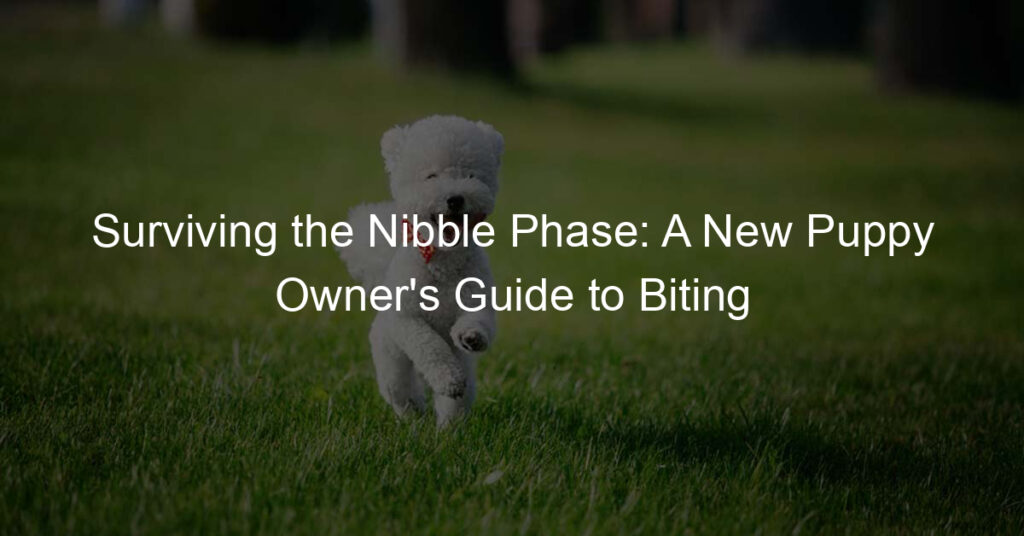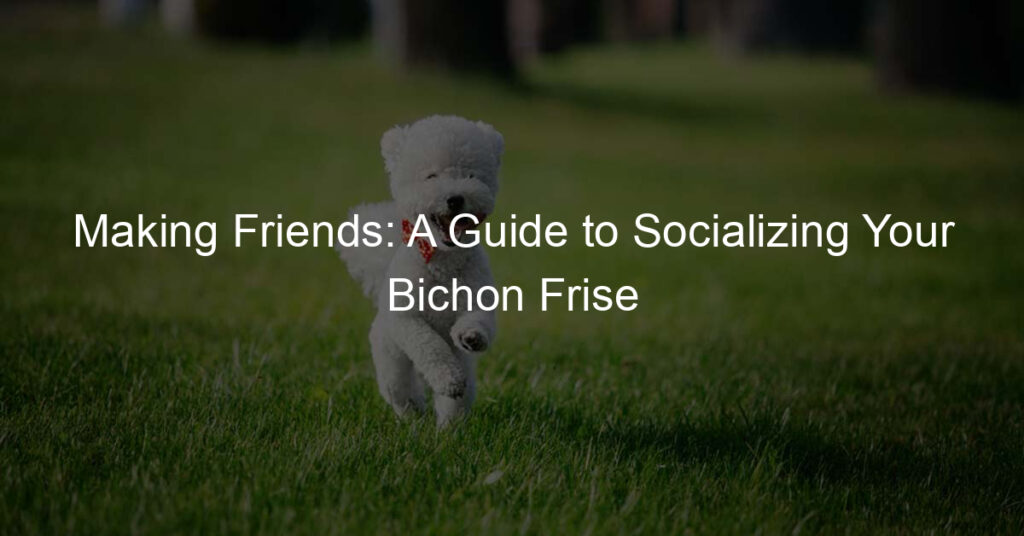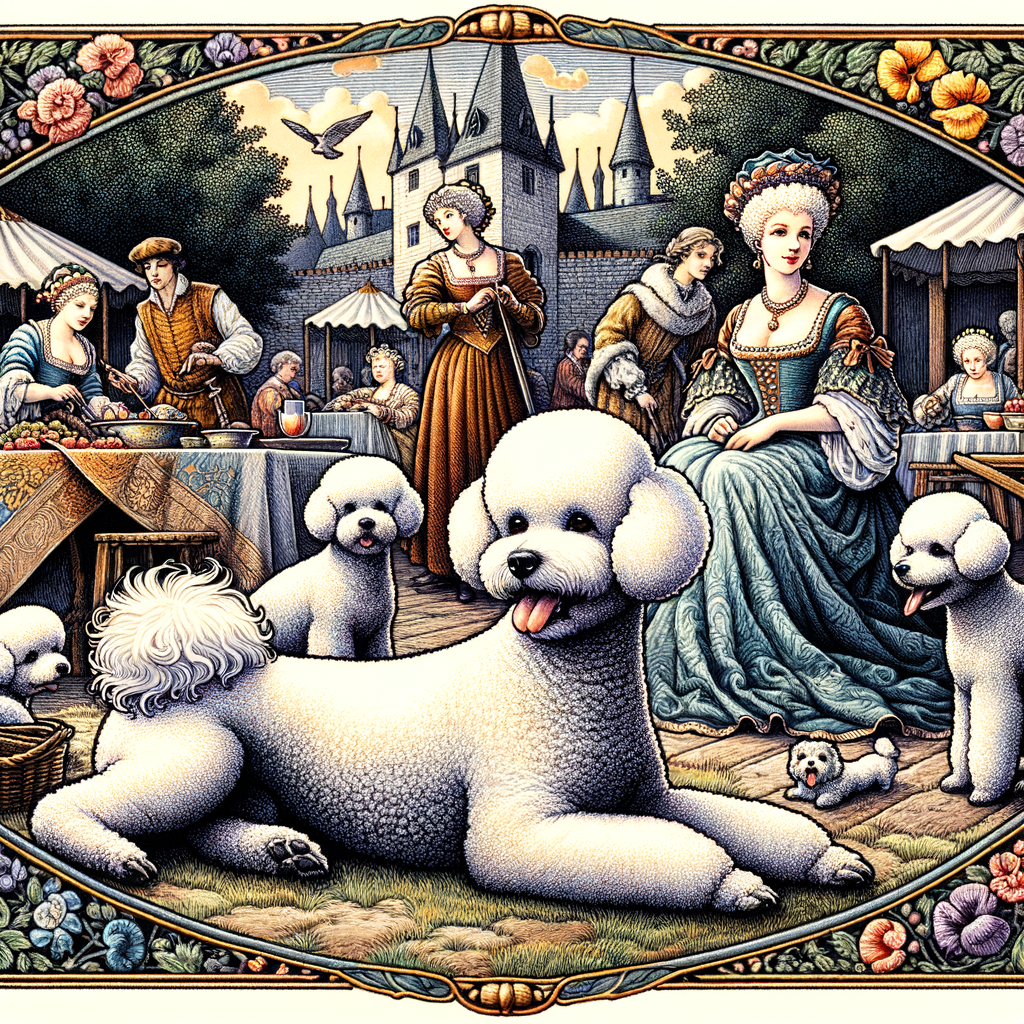
Introduction to Bichon Frises
As a dog lover, you may have come across a breed known as Bichon Frises. These small, fluffy dogs are known for their friendly nature and playful demeanor. In this blog post, we will delve into the origin and history of Bichon Frises, their unique characteristics and traits, and their current popularity.
- Origin and history of Bichon Frises
- Characteristics and traits of Bichon Frises
- Current popularity of Bichon Frises
The Bichon Frise, also known as the Bichon Tenerife or Tenerife Dog, originated in the Mediterranean region in the 14th century. They were bred from the Bichon Tenerife, an extinct breed of dog that was popular among sailors. The Bichon Frise quickly became a favorite among the nobility, and was often seen in the courts of France, Spain, and Italy.
Bichon Frises are small dogs, typically weighing between 10 to 20 pounds. They are known for their white, curly coat, which is hypoallergenic and does not shed. Bichon Frises are also known for their friendly and sociable nature. They are great with children and other pets, making them an ideal family pet. They are also intelligent and easy to train.
Today, Bichon Frises are one of the most popular breeds of dog in the United States. According to the American Kennel Club, they are the 46th most popular breed out of 197 recognized breeds. Their popularity is due to their friendly nature, hypoallergenic coat, and their ability to adapt to various living conditions.
In conclusion, Bichon Frises are a wonderful breed of dog with a rich history. Whether you are looking for a family pet or a companion, a Bichon Frise is a great choice. Stay tuned for our next blog post where we will delve deeper into the history of Bichon Frises in Medieval Europe.
Bichon Frises History
Understanding the history of Bichon Frises, a breed known for its cheerful disposition and fluffy white coat, can provide us with fascinating insights into the past. Let’s delve into the early history of these adorable dogs.
Early History of Bichon Frises
The early history of Bichon Frises is as intriguing as the breed itself. They have a rich heritage that dates back to centuries ago. Here are some key points:
- Origins in the Mediterranean region
- Spread to different parts of Europe
The Bichon Frise breed originated in the Mediterranean region. They are believed to be descendants of the Barbet, a water spaniel. The word ‘Bichon’ is derived from ‘Barbichon’, which means ‘small Barbet’. These dogs were bred to be companions and were adored for their playful and friendly nature.
From the Mediterranean, Bichon Frises spread to different parts of Europe. They were brought by sailors to various European countries, including Spain, Italy, and France. In the 14th century, Italian sailors brought these dogs back from their voyages, and they quickly became popular among Italian nobility. From Italy, the breed spread to France, where they were favored by French royalty and became a symbol of the French court.
Thus, the early history of Bichon Frises is marked by their journey from the Mediterranean region to different parts of Europe, where they were cherished and adored by the nobility and royalty. This history not only speaks volumes about the breed’s charm and appeal but also its ability to adapt and thrive in different environments and cultures.
Bichon Frises in Medieval Europe
The Bichon Frise, a small, cheerful, and friendly breed, enjoyed a significant status in Medieval Europe. This period marked a significant chapter in the history of Bichon Frises, as they became a favorite among the nobility and royalty, and were frequently depicted in art and literature.
- Popularity among nobility and royalty
- Depictions in art and literature
The Bichon Frise was a highly sought-after breed during the Middle Ages, particularly among the nobility and royalty. These dogs were not just pets; they were status symbols. The Bichon Frise’s small size, friendly demeanor, and beautiful white coat made them a favorite among the aristocrats of the time. They were often given as gifts to mark special occasions or to seal alliances. The breed’s popularity was such that they were even kept in royal courts. For example, King Francis I of France was known to have a Bichon Frise as a companion.
The Bichon Frise’s popularity in Medieval Europe extended beyond the royal courts and into the realm of art and literature. Artists of the time often included these dogs in their paintings, showcasing their importance in society. In literature, Bichon Frises were often depicted as loyal and loving companions. Their appearance in such works further solidified their status as a beloved breed.
In conclusion, the Bichon Frise’s history in Medieval Europe is a testament to their enduring appeal. Their popularity among the nobility and royalty, as well as their frequent depictions in art and literature, highlight the breed’s significant role during this period.
Medieval Europe Dogs
In the Middle Ages, dogs played a crucial role in the lives of people in Europe. They were not just pets, but also workers and symbols of various cultural significances. Let’s delve into the different roles dogs had in Medieval Europe.
Role of Dogs in Medieval Europe
- Working Dogs
During the Medieval times, dogs were primarily used for work. They were trained to perform various tasks such as hunting, herding, and guarding. Hunting dogs, for example, were used by nobles to track and catch game. Herding dogs, on the other hand, were used by farmers to manage livestock. Guard dogs were used to protect properties and people from potential threats.
- Companion Dogs
Aside from being workers, dogs also served as companions. They provided comfort and companionship to their owners. Nobles, in particular, often kept dogs as pets. These dogs were usually small breeds that could be easily carried around. They were often seen in portraits, showcasing their status as cherished pets.
- Symbolism and Cultural Significance
Dogs also held symbolic and cultural significance in Medieval Europe. They were often associated with various virtues such as loyalty, courage, and vigilance. In literature and art, dogs were often used as symbols to convey these virtues. For instance, a dog at the feet of a noble in a portrait symbolized loyalty and fidelity.
In conclusion, dogs were an integral part of life in Medieval Europe. They were more than just pets; they were workers, companions, and symbols of cultural significance. Their roles and importance in society were a testament to their versatility and adaptability, qualities that continue to endear them to us today.
Popular Dog Breeds in Medieval Europe
During the medieval times in Europe, dogs were not just pets but also played vital roles in various aspects of life. Let’s take a look at some of the popular dog breeds during this era and how they compare to the Bichon Frises.
- Comparison with Bichon Frises
- Evolution of dog breeds over time
The Bichon Frises, a breed known for its fluffy white coat and cheerful disposition, is a breed that has been around for centuries. However, during the medieval times, other breeds were more popular. For instance, the Greyhound was a favorite among nobility for its speed and hunting abilities. The Mastiff, known for its size and strength, was used for guarding and protection. In comparison, the Bichon Frises, with its smaller size and friendly nature, was more of a companion dog, often kept by ladies of the court for companionship.
Over time, dog breeds have evolved significantly. In medieval Europe, dogs were primarily bred for specific roles such as hunting, herding, and protection. As societies changed and developed, so did the needs for different types of dogs. This led to the development of new breeds and the refinement of existing ones. For example, the Bichon Frises, originally a favorite among sailors for its rat-catching abilities, was later bred to be smaller and more sociable, making it a popular choice as a companion dog. This evolution of dog breeds reflects the changing roles and values of dogs in society.
In conclusion, while the Bichon Frises may not have been the most popular breed in medieval Europe, its evolution and continued popularity today speak volumes about its enduring appeal. From the hardworking Greyhound and Mastiff to the companionable Bichon Frises, each breed has its unique place in history and in our hearts.
Canine Trends in Europe
Let’s take a journey back in time and explore the fascinating world of historical canine trends in Europe. We’ll delve into the shifts in breed popularity and the influence of societal changes on these trends.
Historical Canine Trends
Over the centuries, Europe has seen a variety of canine trends. These trends have been influenced by a multitude of factors, including societal changes and shifts in breed popularity.
- Shifts in Breed Popularity
- Influence of Societal Changes on Canine Trends
In the past, the popularity of dog breeds in Europe was largely determined by their utility. For instance, in the Middle Ages, large breeds like the Mastiff and the Irish Wolfhound were popular for their hunting and guarding abilities. However, as society evolved, so did the preferences for dog breeds. During the Renaissance, smaller, more companionable breeds like the Bichon Frise gained popularity, especially among the nobility.
Societal changes have had a significant impact on canine trends in Europe. For example, during times of war, breeds known for their strength and resilience, such as the German Shepherd, were highly valued. On the other hand, during times of peace and prosperity, breeds known for their companionship and aesthetic appeal, like the Bichon Frise, became more popular. This trend continues today, with societal changes playing a key role in determining the popularity of different dog breeds.
Understanding these historical canine trends provides a fascinating insight into the relationship between humans and dogs. It also helps us appreciate the diverse range of dog breeds we have today and the roles they play in our society.
Modern Canine Trends
As we navigate through the 21st century, the world of dogs is also evolving. Let’s delve into the modern canine trends, focusing on the popular breeds in Europe and the role of Bichon Frises.
- Current popular breeds in Europe
- Role of Bichon Frises in modern canine trends
Europe has a diverse range of dog breeds, each with its unique charm and characteristics. According to recent statistics, the Labrador Retriever holds the top spot as the most popular breed in Europe. This breed is known for its friendly nature and versatility, making it a favorite among families. Following closely are the German Shepherd and the Golden Retriever, both loved for their intelligence and loyalty.
The Bichon Frise, a small breed with a big personality, has been making waves in the modern canine world. This breed, known for its fluffy white coat and cheerful disposition, is increasingly popular among city dwellers due to its adaptability to apartment living. Bichon Frises are also hypoallergenic, making them an excellent choice for those with allergies.
Moreover, Bichon Frises are becoming trendsetters in the world of dog fashion. Their white, curly fur is perfect for creative grooming, and they often steal the show in dog fashion events. This trend has boosted the breed’s popularity and influenced the pet industry to produce more products tailored to small, fluffy breeds.
In conclusion, modern canine trends are a reflection of our changing lifestyles and preferences. Whether it’s the family-friendly Labrador Retriever or the fashionable Bichon Frise, each breed has a unique role in shaping these trends.
Bichon Frises Popularity
The Bichon Frise, a small, cheerful, and companionable dog breed, has seen a significant rise in popularity over the years. This surge in popularity can be attributed to a variety of factors. Let’s delve into the key reasons behind the Bichon Frise’s increasing popularity.
Factors Contributing to Bichon Frises Popularity
There are two main factors that significantly contribute to the popularity of Bichon Frises: their temperament and adaptability, and their distinctive appearance.
- Their temperament and adaptability
Bichon Frises are known for their friendly and adaptable nature. They are great companions, displaying an affectionate and cheerful temperament that is infectious. They are also highly adaptable, comfortable in both apartments and larger homes, and can easily adjust to different environments and lifestyles. This adaptability makes them a favorite among a wide range of dog lovers, from busy city dwellers to families with kids.
- Their distinctive appearance
The Bichon Frise’s distinctive appearance is another factor that contributes to their popularity. With their fluffy white coat, round dark eyes, and playful demeanor, Bichon Frises are undeniably charming and attractive. Their small size also adds to their appeal, making them easy to handle and ideal for both indoor and outdoor living.
In conclusion, the Bichon Frise’s popularity can be largely attributed to their adaptable and friendly temperament, as well as their distinctive and appealing appearance. These traits make them a favorite among dog lovers and contribute to their increasing popularity.
Impact of Bichon Frises Popularity
The popularity of Bichon Frises has had a significant impact on the world of dogs and beyond. Let’s explore how this breed has influenced other dog breeds and its role in popular culture.
- Influence on other dog breeds
- Role in popular culture
The Bichon Frise’s popularity has had a ripple effect on other dog breeds. Breeders and dog lovers have taken note of the Bichon’s distinctive features and temperament, leading to a rise in the popularity of similar small, fluffy, and friendly breeds. For example, the Maltese and the Shih Tzu, both of which share some characteristics with the Bichon Frise, have seen an increase in popularity. The Bichon’s adaptability and friendly nature have set a standard that other breeds are often compared to.
Bichon Frises have also made a mark in popular culture. Their adorable appearance and lovable personality have made them a favorite choice for movies, TV shows, and advertisements. For instance, a Bichon Frise named “Snowball” was a key character in the popular movie “The Secret Life of Pets”. Also, Bichon Frises often appear in children’s books and cartoons, further cementing their place in popular culture. Their popularity in media has not only increased their own popularity but also raised awareness and interest in dog adoption and care in general.
In conclusion, the popularity of Bichon Frises has had a profound influence on other dog breeds and popular culture. Their distinctive features and lovable nature have set a trend that many have followed, and their presence in media has made them a beloved part of our lives.
Conclusion: Bichon Frises as Medieval Trendsetters
As we draw our exploration of Bichon Frises to a close, it’s clear that these fluffy, cheerful dogs were not just pets in Medieval Europe, but trendsetters in their own right. Their historical significance and continued popularity today are a testament to their enduring appeal.
- Summary of Bichon Frises’ Historical Significance
- Continued Relevance and Popularity Today
The Bichon Frise, with its distinctive fluffy coat and cheerful demeanor, was a beloved companion in the courts of Medieval Europe. These dogs were not just pets, but symbols of status and wealth. Their popularity among the nobility set a trend that spread throughout Europe, making them one of the most sought-after breeds of the time.
Fast forward to the present day, and the Bichon Frise is still a beloved breed. According to the American Kennel Club, the Bichon Frise ranks 46th in popularity out of 197 breeds. Their friendly nature, combined with their hypoallergenic coats, make them a popular choice for families and individuals alike.
In conclusion, the Bichon Frise’s historical significance as a trendsetter in Medieval Europe is a fascinating aspect of their breed history. Their continued popularity today shows that their appeal is timeless. Whether as companions to royalty or beloved family pets, Bichon Frises have a unique place in canine history.
